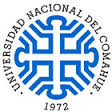JavaScript is disabled for your browser. Some features of this site may not work without it.
Mostrar el registro sencillo del ítem
| dc.creator | Fasanella, Mariana | |
| dc.creator | Mathiasen, Paula | |
| dc.creator | Juri, Gabriela | |
| dc.creator | Díaz, Dayana G. | |
| dc.creator | Hasbún, Rodrigo | |
| dc.creator | Premoli, Andrea C. | |
| dc.date | 2022 | |
| dc.date.accessioned | 2024-02-20T15:55:38Z | |
| dc.date.available | 2024-02-20T15:55:38Z | |
| dc.identifier.uri | http://rdi.uncoma.edu.ar/handle/uncomaid/17700 | |
| dc.description.abstract | Geogenomics seeks to understand geological processes linked to lineage divergence. However, the mechanisms that conserve ancient signals in spite of gene flow are still unclear. In the southern beech, the deep lineage divergence produced by vicariant events is associated with ancient marine transgressions. We hereby evaluate the hypothesis that this divergence is maintained by diversifying selection. Location: Southern Argentina and Chile. Taxon: Nothofagus dombeyi. Methods: The lineage divergence by means of analysis of molecular variance (AMOVA), principal coordinate analysis, assignment tests and multiple matrix regression analyses were assessed using chloroplast DNA and neutral and outlier single nucleotide polymorphisms (SNPs). Several environmental variables were used to characterize potential within-species niche structuring and genotype–environment associations. Results: Two deep-rooted latitudinally structured lineages resulted from cpDNA, the northern cluster being more genetically diverse than the southern one. Of the total of 2943 SNPs, 33 identified as outliers and produced two genetic clusters. Neutral SNPs yielded no structure by AMOVA, whereas higher (>75%) FST values were obtained for cpDNA and outlier SNPs. Precipitation variables were mostly associated with population clusters and suggested two climatic niches, consisting of cold and dry in the south and more variable precipitation, temperature and soil conditions in the north. Associations of genetic distance with environment and geography suggested isolation-by-distance and isolation-by-ecology or isolation-by-environment effects. Main conclusions: Ancient lineage divergence in N. dombeyi, originally driven by vicariance, has been maintained by diversifying selection under distinct environmental conditions that also define distinct within-species niches. Deeply rooted phylogeo- graphical breaks can be conserved in continuously distributed species in the absence of current geographical barriers. Yet, physical gradients exert differential selective pressures, which are maintained in the face of potential gene flow. As a result, selec tion can lead to geographically localized and differentially adapted groups of populations that can be detected by a combination of traditional phylogeographical and novel genomic methods. | es_ES |
| dc.format | application/pdf | es_ES |
| dc.format.extent | pp. 564-575 | es_ES |
| dc.language | eng | es_ES |
| dc.publisher | John Wiley & Sons Ltd | es_ES |
| dc.relation.uri | https://doi.org/10.1111/jbi.14554 | es_ES |
| dc.relation.uri | http://rdi.uncoma.edu.ar/handle/uncomaid/16887 | es_ES |
| dc.rights | Atribución-NoComercial-CompartirIgual 2.5 Argentina | es_ES |
| dc.rights.uri | https://creativecommons.org/licenses/by-nc-sa/2.5/ar/ | es_ES |
| dc.source | Journal of Biogeography. Vol. 50 2023 | es_ES |
| dc.subject | Nothofagus dombeyi | es_ES |
| dc.subject | cpDNA sequences | es_ES |
| dc.subject | Patagonia | es_ES |
| dc.subject | https://purl.org/becyt/ford/1.6 | es_ES |
| dc.subject.other | Ciencias de la Tierra y Medio Ambiente | es_ES |
| dc.title | Ancient vicariance is reinforced by adaptive divergence in the southern beech: Contributions from geogenomics | es_ES |
| dc.type | Articulo | es |
| dc.type | article | eu |
| dc.type | acceptedVersion | eu |
| dc.description.fil | Fil: Fasanella, Mariana. Universidad Nacional del Comahue. Centro Regional Universitario Bariloche; Argentina. | es_ES |
| dc.description.fil | Fil: Fasanella, Mariana. Consejo Nacional de Investigaciones Científicas y Técnicas; Argentina. | es_ES |
| dc.description.fil | Fil: Mathiasen, Paula. Universidad Nacional del Comahue. Centro Regional Universitario Bariloche; Argentina. | es_ES |
| dc.description.fil | Fil: Mathiasen, Paula. Instituto de Investigaciones en Biodiversidad y Medioambiente; Argentina. | es_ES |
| dc.description.fil | Fil: Mathiasen, Paula. Consejo Nacional de Investigaciones Científicas y Técnicas; Argentina. | es_ES |
| dc.description.fil | Fil: Juri, Gabriela. Universidad Nacional del Comahue. Centro Regional Universitario Bariloche; Argentina. | es_ES |
| dc.description.fil | Fil: Juri, Gabriela. Universidad Nacional de Río Negro; Argentina. | es_ES |
| dc.description.fil | Fil: Juri, Gabriela. Consejo Nacional de Investigaciones Científicas y Técnicas; Argentina. | es_ES |
| dc.description.fil | Fil: Juri, Gabriela. Instituto de Investigaciones en Recursos Naturales, Agroecología y Desarrollo Rural; Argentina. | es_ES |
| dc.description.fil | Fil: Diaz, Dayana. Universidad Nacional del Comahue. Centro Regional Universitario Bariloche; Argentina. | es_ES |
| dc.description.fil | Fil: Diaz, Dayana. Instituto de Investigaciones en Biodiversidad y Medioambiente; Argentina. | es_ES |
| dc.description.fil | Fil: Diaz, Dayana. Consejo Nacional de Investigaciones Científicas y Técnicas; Argentina. | es_ES |
| dc.description.fil | Fil: Hasbún, Rodrigo. Universidad de Concepción. Facultad de Ciencias Forestales. Departamento de Silvicultura. Laboratorio de Epigenética Vegetal; Chile. | es_ES |
| dc.description.fil | Fil: Premoli, Andrea C. Universidad Nacional del Comahue. Centro Regional Universitario Bariloche; Argentina. | es_ES |
| dc.description.fil | Fil: Premoli, Andrea C. Instituto de Investigaciones en Biodiversidad y Medioambiente; Argentina. | es_ES |
| dc.cole | Artículos | es_ES |



